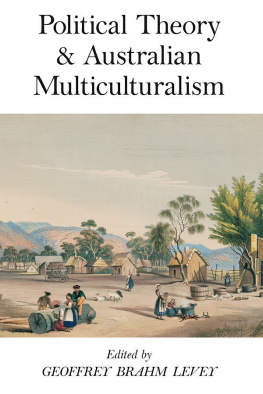First published 1996 by Berg Publishers
Published 2020 by Routledge
2 Park Square, Milton Park, Abingdon, Oxon OX14 4RN
605 Third Avenue, New York, NY 10017
Routledge is an imprint of the Taylor & Francis Group, an informa business
Judith Kapferer 1996
All rights reserved. No part of this publication may be reproduced or transmittedin any form or by any means, electronic or mechanical, including photocopying, recording, or any information storage or retrieval system, without prior permission in writing from the publishers.
Notice:
Product or corporate names may be trademarks or registered trademarks, and are used only for identification and explanation without intent to infringe.
Library of Congress Cataloging-in-Publication Data
A catalogue record for this book is available from the Library of Congress.
British Library Cataloguing-in-Publication Data
A catalogue record for this book is available from the British Library.
Typeset by JS Typesetting, Wellingborough, Northants.
ISBN 13: 978-1-859-73101-7 (hbk)
ISBN 13: 978-1-859-73106-2 (pbk)
When I was very young, there was a childrens radio serial called The Search for the Golden Boomerang. I have utterly no memory of the plot, theme or characters, only of the regular portentous announcement in the style of the times. Now I have written a book about the ceaseless human quest for community, and it seems to me that the Golden Boomerang is a fitting metaphor for that search in Australia: community is precious, it is supremely worth striving for, and it forever returns to inspire our dreams of being in the world.
My own vision of that lifeworld is, I think, very Australian-simultaneously individualist, and egalitarian. But as a sociologist, I endeavour to see that world through the eyes of others with whom I share it, others sometimes quite like me, sometimes quite unlike. I have traced out here various aspects of Australian cultural practice which, no doubt, many will find to be an idiosyncratic selection of activities, events, people and places the social relations built on different (of gender, of class, of race and ethnicity) and their manifestations in the living out of everyday lives. What I have tried to show is that these mundane happenings, formed in arts, histories, politics, economics, philosophies, are a universal human work undertaken in a particular human situation which is late twentieth century Australia, but still resonating through other times and other places.
I have been very conscious, in the long process of research and writing, of my own deep need for community, for companionship, support and attachment. And I have everywhere discovered that need in others. Australians, it has been said, have a talent for bureaucracy, with all its cautious, officious, going-by-the-book implications. But with very few exceptions I have met with little but courtesy, interest and goodwill from those, usually nameless, from whom I have sought assistance and advice, and I thank them for that. As well, and too many to name, I want to thank countless friendly guides, curators, librarians, garage mechanics, bus drivers, newsagents, motel operators, town clerks, local historians and tourism advocates in South Australia, Victoria, New South Wales and Queensland, whose local and specialist knowledges have kept me fascinated, in good spirits and on the roads around the country. As have my Monaro neighbours, the Elluls and the Hartigans.
For financial assistance, I particularly wish to thank Dr. Michael Lawson and Dr. Robert Withers for their good offices in securing for me, and Louise Marks and Beverley Palmer for administering, over many years, small grants from the Flinders University Research Budget. Belinda Niederers infrastructural support dealing with my technological incompetence has been invaluable.
I owe an enormous debt of gratitude to the Netherlands Institute for Advanced Study in the Humanities and Social Sciences, a scholars paradise where I spent a glorious year as Fellow in 19912. The disparate group of historians, anthropologists, classicists, economists, linguists sociologists and philosophers with whom I spend that year provided a stimulus and an inspiration which has yet to fade. Their lunchtime conversations, their weekly seminars, the cheerful assistance of technicians and librarians and the unobtrusive and learned directorship of Dr. Dirk van der Kaa, combined to produce that sense of community which is so rare in large universities today as to be little more than a faint memory. The heart of community, in St. Augustines words, lies in conversations and jokes together, reading together and the mutual rendering of small attentions. NIAS provided all this for me.
There are others with whom I share conversations and jokes, reading and affectionate attentions, my friends Judy Gill, Christina Haskin, Sue Howard, Felicity Hughes, Denis Grundy. As well, I have colleagues at Flinders who, from time to time share rueful jokes and commentaries on the state of the academy with me. All these continue to remind me, in the welter of academic bureaucracy and administrative warfare, that universities are still the best places to engage in research and scholarship.
It is a rare pleasure for me to have my family gathered together in the same place at the same time on this page. Above all others I owe to them gratitude for their loving support over many years. To my mother, Alison Champain, for her unwavering hospitality, devoted moral support and diligent research assistance; to my son, Roland Kapferer, determined guide, serious philosopher and good friend; to my daughter Michaela Kapferer, exuberant, incisive and eagle-eyed explorer of popular culture to these I offer my heartfelt thank, with love. And to Bruce Kapferer, anarchist anthropologist, an indomitable idealist who embraces all of humanity with a ferocious passion, a generous teacher, an inspiring companion and heroic seeker after community to him I dedicate this book, as too small a recompense for all that he has given me.
Judith Kapferer
Adelaide









